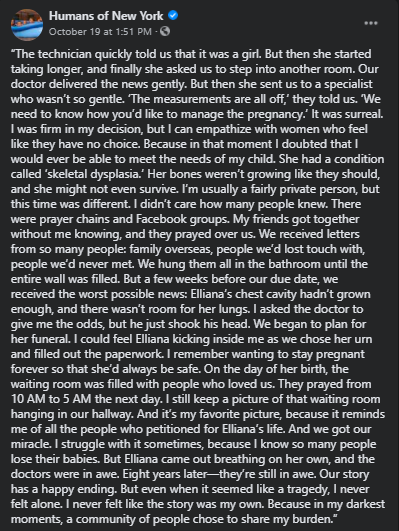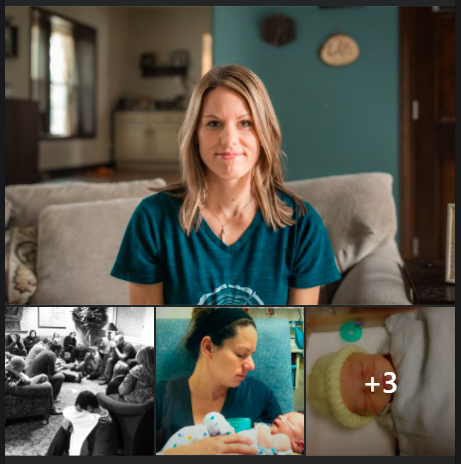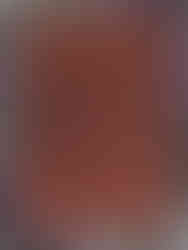Week 6: Noticing the Ignored
- Ashley Ehman
- Nov 4, 2020
- 9 min read
Updated: Dec 10, 2020
There's a certain art in truly studying the things around you. When you come home, do you notice how it smells when you first open the front door? Or have you ever noticed the plush stuffed animal in the rear window of your neighbor's car? The world around us is seen in some facet by our eyes every day. When you become familiar with your surroundings, it's easy to forget that things are always changing. This week is all about seeing what is otherwise forgotten, overlooked, and straight-up ignored.
Lecture Reflection
This week's lecture covered a variety of designers and artists who have captured the world in unique ways. John Smith recreated a part of his world through his short film, Girl Chewing Gum. Stephen Gill incorporated flowers into his photographs, creating works of art in his series titled "Hackney Flowers." Maxwell Granger captured portraits of people in their homes and called it "Portraits of Friends." These are only a few ways in which artists and designers "noticed the ignored" (Falmouth Flexible 2020).

One individual, in particular, stuck out to me though. That individual was Vivian Maier. Her claim to fame is an interesting one. She made her living by working as a nanny in New York City, and then, as a caregiver in Chicago. To her, photography was just a pastime, a hobby. During her lifetime, she accumulated over 100,000 negatives of people she had photographed. Despite working at her craft for over four decades, she never released her work to the general public. By way of chance, her photographs made their way into the hands of John Maloof. When Maier fell into poverty, one of her storage lockers was auctioned off to offset her delinquent payments. Inside, housed the majority of her work. When Maloof happened to purchase some of her negatives at an auction in Northwest Chicago, he knew he had come across something special. To this day, he has successfully reconstructed roughly 90% of Vivian's work. Serving as the primary curator and collection caretaker, Maloof helped Maier achieve notoriety within the world of photography, despite her passing in 2009.
Vivian Maier caught my eye for a few reasons. First, I was intrigued by her posthumous claim to fame. The idea of becoming known for something after one's death has always been fascinating to me. Because she passed on and wasn't the person to bring her art to life, it also brings up some interesting points in how her work is presented to its viewers. As John Berger described in his show, Ways of Seeing, everything around an image contributes to its meaning.
Would she have printed on glossy or matte paper? How would she have organized the photos in a museum? Would there be music playing in the gallery? Would she have broken up her collections by timeframe they were taken or subject matter?
These are all worthwhile considerations. Thankfully, John Maloof was careful to match her techniques in every way that he could. Based on the images Maier had printed during her life, the majority of her work is displayed in a similar fashion. When curating exhibits for a museum, Maloof is committed to representing what he believes is the most authentic version of Vivian Maier.
Humans of New York
Having researched Vivian Maier beyond the information that the lecture provided, I found her work to be very similar to a popular photographer of the modern-day. His name is Brandon Stanton, and he's the man behind the camera of the viral photography sensation, Humans of New York. What started as a hobby in 2010 quickly collected a worldwide following. With over 18 million likes on Facebook, these portraits of people have been seen by people across the globe. As Stanton describes,
Humans of New York began as a photography project in 2010. The initial goal was to photograph 10,000 New Yorkers on the street, and create an exhaustive catalogue of the city’s inhabitants (Stanton 2019).
Since then, he's traveled the world, asking people from different countries to share stories from their lives. He's talked with call girls from the 1930s, interviewed young adults in war-torn Syria, and a homeless man with a Ph.D. He brings people's stories to light, and helps them discover they're not so alone in the world. I imagine if Vivian Maier had displayed her photographs, she would have a comparable level of respect within the photography community. I couldn't find any information confirming that Stanton was inspired by her work, but I'd like to believe he was. As Vivian put it,
Well, I suppose nothing is meant to last forever. We have to make room for other people. It’s a wheel. You get on, you have to go to the end. And then somebody has the same opportunity to go to the end and so on (Maloof 2013).
Brandon Stanton and HONY are the continuation of this wheel. Having amassed a large social media following, published multiple New York Times best-sellers, and brought light to a variety of tough topics, Stanton seems to be managing his time with the wheel pretty well and I think Vivian would be impressed.
Resource Reflection
The resources for this week were very insightful and had me questioning a few different things. Ex-Formation presented the interesting task of unknowing one's world. I liked that it discussed everyday conversation, and how we're hurting ourselves by falling into the "I know, I know" trap. Conversation should be more than an exchanging of facts, but rather, a collection of insights and ideas. Not only is this a good tactic to use when "unlearning" the world around you, but conversations will be more fruitful and meaningful.
In a way, organized education can both help and hinder one's ex-formation journey. As the quote by Albert Einstein at the beginning of the book states,
It is a miracle that curiosity survives formal education (Hara 2015)
I believe this to be especially true in elementary up through high school. At least in the United States, there are definitely rules that are to be followed during formal education. I often felt that my own creativity was lessened on account of my teachers and their need to follow their curriculum.
In college, this changed. In a strange way, despite its organized structure, I believe college does well to introduce people to their own unknown. Perhaps it was just how my professors ran their classes, but I felt as though I was always encouraged to ask questions and probe deeper into topics. We didn't watch presentations, we engaged in debates, informal information sessions, and group projects. Because my classes were increasingly project-based, the ability to discuss topics was encouraged, not looked down upon. For me, college created an entrance for curiosity, as Hara put it.
The other reading resource was "Sketchbooks; The Hidden Art of Designers, Illustrators and Creatives" by Richard Brereton. This was such a cool book, at least based on the pages I saw. I would definitely consider purchasing it for my own viewing. It's always interesting to see how other creatives organize themselves and seeing bits and pieces of their sketchbooks was like a quick peek into their thought process. It was reassuring to hear some of them recall how their sketchbooks housed many things from sketches, to random thoughts, to lists. I'm a huge list person myself, and I always try to keep my sketchbook list-free. Perhaps this is the wrong way of thinking!
I've since gotten a new sketchbook just for class, but I might switch back to my old one, just because a few of the designers described their sketchbook as their "journal" of sorts. As I see it, a journal should be kept in one place. I continually try to be more organized than I really am when it comes to my creative endeavors, and I think the permission to let loose amongst my pages could end up being a good decision. I've included a few pages from my bullet-journal-turned-sketchbook-and-collection-of-random-things. The differences between my own notebook and those in the reading were a good reminder that there's no one way to organize yourself best, except for what works best for you!
Workshop Challenge
This week's workshop challenge was rooted in seeing the unseen and recognizing pieces of our world that often go unnoticed. For this challenge, we were tasked with exploring an area near our homes and trying to find what was unique about it.
My home's existence is hardly special. I live in an apartment in an urban college town. We have public transportation, good food, bad food, and there's always a fair amount of things to do when we're not bogged down by a pandemic. I've lived here for 3 1/2 years now and will be bidding Madison farewell this upcoming June.
With my camera in hand, I went searching. I started with a visual tool, my camera, because I figured I would have more fun with a project that required the use of imagery. It was also a good excuse to practice my photography skills (they're usually sharpened at live music events, but those aren't really a thing right now). I wasn't really sure what I should be taking pictures of, but I grabbed photos of whatever I thought was interesting. It was my hope that some sort of pattern or trait would make itself known.
Initially, I opted to walk amongst the residential areas in my neighborhood. It's a collection of apartment complexes, condominiums, and more apartments. There's an invisible line on our road that seems to mark where the houses are allowed to start, and they all belong to upper-class families and individuals. There's a park about a block away where local children play basketball and the Indian families living in the complex nearby will sometimes organize a game of Cricket. At this point in my walk, I wasn't really noticing anything special.
I came to a four-way stop. Forward were more apartment complexes. Behind me would take me home. Left went towards the more affluent neighborhoods, and I figured they wouldn't take too kindly to some random person taking photographs. I opted to go right. This led me to the main road on our side of town, Mineral Point Road. The road itself goes across Madison for miles, but our particular section is packed with all sorts of retail businesses. In fact, right near my complex are two different strip malls.
We live on a border between residential and retail, I thought to myself. At any given time, Target, Walgreens, Starbucks, multiple gyms, restaurants, and other businesses are all within walking distance. There's even a dilapidated mall within reach. With this thought already in my mind, I came across the local Walgreens. I've seen the signage a million times (and that's not an exaggeration) but for whatever reason, on this unseasonably warm autumn afternoon, one letter stuck out to me.
R.
I would just like you to know, in my defense, it is a really nice looking "R."

I began scanning the rest of the businesses nearby. Some unique to the area, some not. The fact that I lived on this invisible border, however, made my location special! I started snapping photos of different signs, logos, and business names. With all these designed letters floating around in my head, I realized I could use them to spell something! I had my Workshop Challenge figured out. I would spell "Mineral Point Road" out of letters from the business that are located on Mineral Point Road.

Perhaps you recognize some of them? I'd be pretty surprised if you recognized them all. With my photos taken, I went home and fired up Photoshop. I originally wanted to get the street name put together and then work it onto an actual street sign, but I came up with a better idea.

In the end, my final piece looked like this:

Each letter came from a different business that I came across. I opted to keep backgrounds and colors versus tracing the letters because I wanted them to still represent the businesses they came from. By putting them together to form the street name they're all on, it was a visual representation of different parts making a whole. For the background, I grabbed a screenshot of the Google Maps version of Mineral Point Road and then blurred it out. Part of me blurred it out to make the letters not get lost in the map, the other part of me did it to prevent creepy people from finding out where I live.
Workshop Reflection
I'm honestly pretty happy with how this turned out. When I showed it to my roommate, he mentioned how he couldn't recognize the individual letter. As I told him where they came from, he responded with a knowing "Ooooh." When they're taken from their whole name, individual letters seem to be ignored!

The one thing that could've been improved would have been my camera. For whatever reason, some of the photos were corrupted when I went to transfer them to my computer, so a few letters had to be grabbed again from Google Maps. Other than that, this was a fun project and I enjoyed seeing what my peers came up with as well!
Sources:
BERGER, John. 2012. “John Berger / Ways of Seeing , Episode 1 (1972).” YouTube [online]. Available at: https://youtu.be/0pDE4VX_9Kk [accessed 1 Nov 2020].
BRERETON, Richard. 2014. Sketchbooks : The Hidden Art of Designers, Illustrators & Creatives. London: Laurence King.
FALMOUTH FLEXIBLE. 2020. “Noticing the Ignored.” flex.falmouth.ac.uk [online]. Available at: https://flex.falmouth.ac.uk?wvideo=a7kp1zfr1u [accessed 1 Nov 2020].
HARA, Kenya and HARA SEMINAR. 2015. Ex-Formation. S.L.: Lars Muller Publishers.
MALOOF, John. 2013. “Vivian Maier Photographer | Official Website of Vivian Maier | Vivian Maier Portfolios, Prints, Exhibitions, Books and Documentary Film.” Vivian Maier Photographer [online]. Available at: http://www.vivianmaier.com/ [accessed 2 Nov 2020].
STANTON, Brandon. 2019. “Humans of New York.” Humans of New York [online]. Available at: https://www.humansofnewyork.com/ [accessed 1 Nov 2020].

















Comments